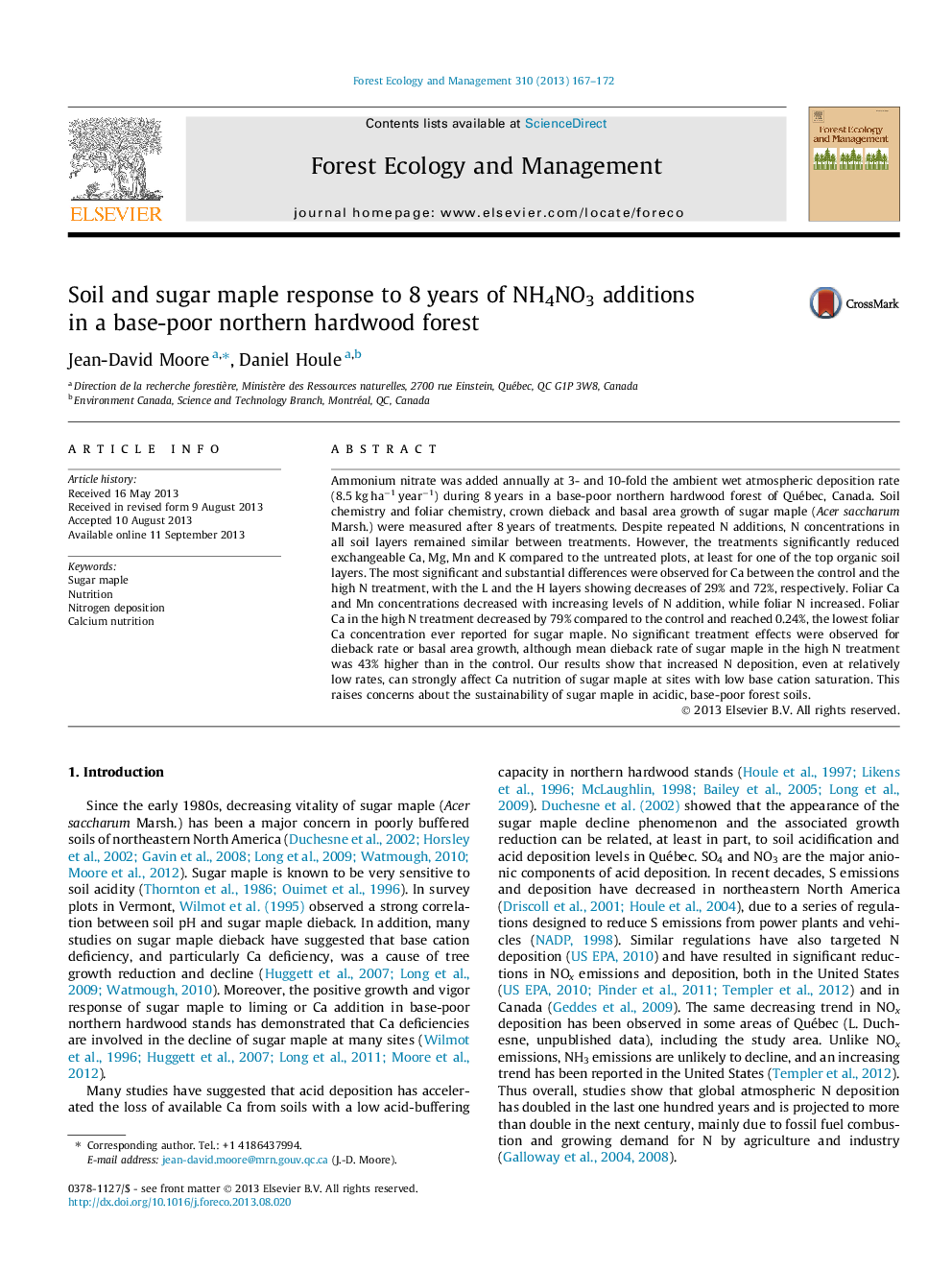| Article ID | Journal | Published Year | Pages | File Type |
|---|---|---|---|---|
| 6543659 | Forest Ecology and Management | 2013 | 6 Pages |
Abstract
Ammonium nitrate was added annually at 3- and 10-fold the ambient wet atmospheric deposition rate (8.5 kg haâ1 yearâ1) during 8 years in a base-poor northern hardwood forest of Québec, Canada. Soil chemistry and foliar chemistry, crown dieback and basal area growth of sugar maple (Acer saccharum Marsh.) were measured after 8 years of treatments. Despite repeated N additions, N concentrations in all soil layers remained similar between treatments. However, the treatments significantly reduced exchangeable Ca, Mg, Mn and K compared to the untreated plots, at least for one of the top organic soil layers. The most significant and substantial differences were observed for Ca between the control and the high N treatment, with the L and the H layers showing decreases of 29% and 72%, respectively. Foliar Ca and Mn concentrations decreased with increasing levels of N addition, while foliar N increased. Foliar Ca in the high N treatment decreased by 79% compared to the control and reached 0.24%, the lowest foliar Ca concentration ever reported for sugar maple. No significant treatment effects were observed for dieback rate or basal area growth, although mean dieback rate of sugar maple in the high N treatment was 43% higher than in the control. Our results show that increased N deposition, even at relatively low rates, can strongly affect Ca nutrition of sugar maple at sites with low base cation saturation. This raises concerns about the sustainability of sugar maple in acidic, base-poor forest soils.
Related Topics
Life Sciences
Agricultural and Biological Sciences
Ecology, Evolution, Behavior and Systematics
Authors
Jean-David Moore, Daniel Houle,
